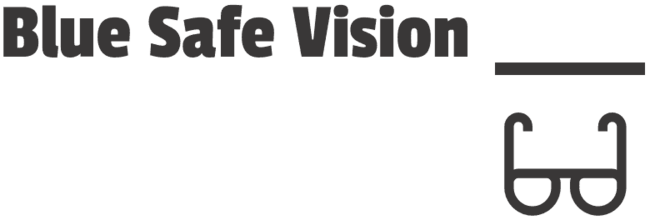
he Science Behind Blue Light and Fatigue
Have you ever wondered why you feel so drained after a long day of staring at screens? It’s not just in your head – there’s science behind it! Blue light emitted by electronic devices like computers, smartphones, and tablets can mess with your body’s natural sleep-wake cycle, leaving you feeling tired and lethargic. When you’re exposed to blue light, it suppresses the production of melatonin, the hormone responsible for making you feel sleepy. So, the more time you spend scrolling through your phone or binge-watching your favorite show late into the night, the harder it becomes for your body to wind down and get the rest it needs.
How Blue Light Affects Your Energy Levels
Picture this: you’ve been glued to your laptop all day, working on that big project or catching up on emails. As the hours tick by, you start to feel your energy dwindling, and by mid-afternoon, you’re practically nodding off at your desk. Sound familiar? Blame it on the blue light! Studies have shown that exposure to blue light can disrupt your body’s internal clock, leading to feelings of fatigue and drowsiness, especially during the day when you’re supposed to be alert and focused. So, if you find yourself reaching for that third cup of coffee to stay awake, it might be time to rethink your screen time habits.
Tips for Beating Blue Light Fatigue
Feeling tired and sluggish from too much screen time? Don’t worry – there are steps you can take to combat blue light fatigue and boost your energy levels naturally. First, try to limit your exposure to screens, especially in the hours leading up to bedtime. Instead of scrolling through social media or watching TV, opt for activities that promote relaxation, like reading a book or taking a warm bath. You can also invest in blue light blocking glasses, which filter out harmful blue light and can help reduce eye strain and fatigue. Lastly, make sure you’re getting enough sleep each night – aim for 7-9 hours of quality shut-eye to feel refreshed and recharged in the morning.
Creating a Blue Light-Friendly Workspace: Your Guide to Optimal Productivity
In today’s digital age, many of us spend hours glued to our screens, whether it’s for work, entertainment, or staying connected with friends and family. But did you know that prolonged exposure to blue light emitted by electronic devices can have negative effects on our health and productivity? That’s why it’s essential to create a blue light-friendly workspace that promotes optimal comfort and productivity. Here are some tips to help you set up your workspace for success:
1. Choose the Right Lighting
When it comes to creating a blue light-friendly workspace, lighting is key. Opt for natural light whenever possible, as it’s the best source of light for your eyes. Position your desk near a window to maximize natural light exposure throughout the day. If natural light is limited, consider investing in full-spectrum LED lights that mimic natural sunlight and emit minimal blue light. Avoid harsh fluorescent lighting, as it can cause eye strain and fatigue.
2. Invest in Blue Light Blocking Glasses
One of the most effective ways to protect your eyes from blue light exposure is by wearing blue light blocking glasses. These glasses filter out harmful blue light wavelengths, reducing eye strain and fatigue caused by prolonged screen time. Look for glasses with a high-quality blue light filter and a comfortable frame that you can wear for extended periods without discomfort. Incorporating blue light blocking glasses into your daily routine can help preserve your eye health and improve your overall productivity.
3. Adjust Your Screen Settings
Most electronic devices come with built-in settings that allow you to adjust the color temperature of your screen to reduce blue light exposure. Take advantage of these settings by decreasing the blue light emission on your devices, especially during the evening hours when you’re winding down for bed. You can also download blue light filter apps or browser extensions that automatically adjust the color temperature of your screen based on the time of day. By making these simple adjustments, you can minimize the impact of blue light on your eyes and sleep patterns.
4. Take Regular Breaks
No matter how well-equipped your workspace is, it’s essential to give your eyes regular breaks from screen time to prevent eye strain and fatigue. Follow the 20-20-20 rule: every 20 minutes, take a 20-second break, and look at something 20 feet away to give your eyes a chance to rest and refocus. Use this time to stretch, blink, and hydrate to keep your eyes healthy and refreshed throughout the day.
The Surprising Impact of Blue Light on Concentration and Focus
In today’s digital age, we’re constantly surrounded by screens emitting blue light, from our smartphones and tablets to our computers and TVs. While we may not give it much thought, the blue light emitted by these devices can have a significant impact on our ability to concentrate and stay focused throughout the day. Let’s delve into how blue light affects our concentration and explore some tips for minimizing its negative effects.
Understanding Blue Light and its Effects
Blue light is a type of high-energy visible (HEV) light that is emitted by electronic devices and LED lights. While some exposure to natural blue light is essential for regulating our sleep-wake cycle and boosting alertness during the day, excessive exposure to artificial blue light can disrupt these rhythms and impair our concentration and focus. Studies have shown that prolonged exposure to blue light can lead to eye strain, headaches, and difficulty concentrating, particularly during tasks that require sustained attention.
The Impact on Circadian Rhythms
One of the primary ways that blue light affects our concentration and focus is by disrupting our circadian rhythms, which regulate our sleep-wake cycle. Exposure to blue light, especially in the evening hours, can suppress the production of melatonin, a hormone that helps us fall asleep and stay asleep at night. This disruption can lead to difficulty falling asleep, poorer sleep quality, and daytime drowsiness, all of which can impair our ability to concentrate and stay focused during the day.
Tips for Minimizing Blue Light Exposure
Fortunately, there are several simple steps you can take to minimize your exposure to blue light and protect your concentration and focus:
- Use Blue Light Filters: Consider using blue light filters on your electronic devices, such as night mode settings or blue light filter apps. These filters reduce the amount of blue light emitted by your screens, making them easier on your eyes and less disruptive to your circadian rhythms.
- Take Regular Screen Breaks: Give your eyes and brain a break by taking regular breaks from screen time throughout the day. Follow the 20-20-20 rule: every 20 minutes, take a 20-second break, and look at something 20 feet away to rest your eyes and refocus your mind.
- Limit Screen Time Before Bed: Avoid using electronic devices with bright screens in the hour leading up to bedtime. The blue light emitted by these devices can interfere with your body’s natural sleep-wake cycle and make it harder to fall asleep. Instead, opt for relaxing activities like reading a book or listening to calming music to wind down before bed.
Maximizing Comfort and Focus: Strategies for Minimizing Digital Eye Strain During Meetings
In today’s modern workplace, virtual meetings have become the norm, leading to increased screen time and, unfortunately, more instances of digital eye strain. Whether you’re attending back-to-back Zoom calls or participating in lengthy video conferences, it’s essential to prioritize your eye health and minimize the discomfort associated with prolonged screen use. Let’s explore some practical strategies for reducing digital eye strain during meetings and keeping your focus sharp.
Creating an Eye-Friendly Environment
To start, set the stage for a comfortable meeting experience by optimizing your workspace for eye health:
- Adjust Lighting: Position your computer screen away from direct sources of glare or harsh lighting to reduce eye strain. Use soft, ambient lighting in your workspace to create a comfortable environment for your eyes.
- Optimize Screen Settings: Adjust the brightness and contrast settings on your computer screen to reduce eye strain. Aim for a screen brightness that is similar to your surrounding environment to minimize glare and maximize comfort.
- Position Your Screen: Position your computer screen at eye level and at arm’s length away from your face to reduce strain on your eyes and neck. Use a monitor riser or stack of books to achieve the optimal viewing angle.
Taking Regular Breaks
During long meetings, it’s essential to give your eyes a break and prevent digital eye strain from setting in:
- Follow the 20-20-20 Rule: Every 20 minutes, take a 20-second break, and look at something 20 feet away to give your eyes a chance to relax and refocus. This simple rule can help alleviate eye fatigue and maintain focus during extended screen time.
- Practice Blinking Exercises: Remember to blink regularly during meetings to keep your eyes moist and prevent dryness. Consider using artificial tears or a humidifier in your workspace to maintain comfortable levels of moisture in the air.
- Stretch and Move: Incorporate stretching and movement breaks into your meeting schedule to reduce muscle tension and improve circulation. Simple exercises like neck rolls, shoulder shrugs, and wrist stretches can help alleviate stiffness and promote overall comfort.
Optimizing Screen Use
Finally, make the most of your screen time by implementing strategies to minimize digital eye strain:
- Use Blue Light Filters: Consider using blue light filters or blue light-blocking glasses to reduce the harmful effects of blue light exposure during meetings. These filters can help alleviate eye strain and promote better sleep quality by minimizing exposure to artificial blue light.
- Adjust Font Size and Contrast: Increase the font size and adjust the contrast settings on your computer screen to make text easier to read and reduce eye strain. Choose a font that is clear and legible to minimize the need for squinting or straining.
- Limit Screen Time: Whenever possible, limit unnecessary screen time and take advantage of audio-only options for meetings. Use screen-sharing sparingly and encourage participants to focus on verbal communication to reduce visual overload and prevent eye fatigue.
Conclusion
By implementing these strategies for minimizing digital eye strain during meetings, you can prioritize your eye health and maintain focus and productivity throughout your workday. Remember to create an eye-friendly environment, take regular breaks, and optimize your screen use to keep your eyes comfortable and your focus sharp. So, the next time you find yourself in a virtual meeting, put these tips into practice and give your eyes the care they deserve!

